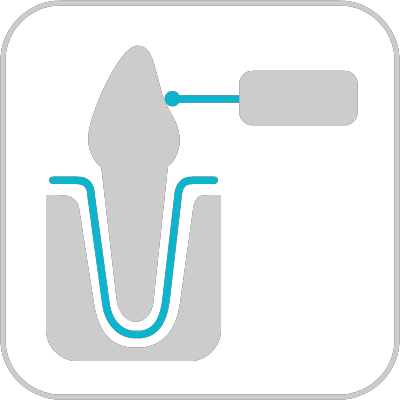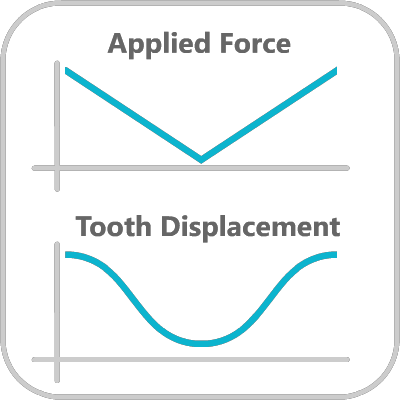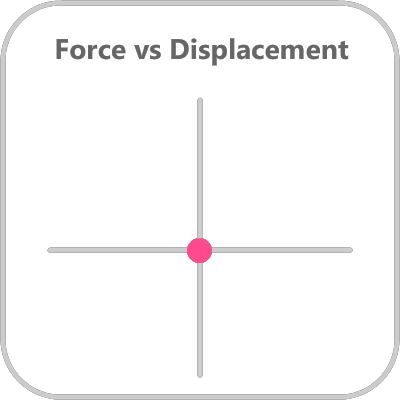WE MEASURE THE OPTIMAL ORTHODONTIC FORCE
This shortens treatment times, reduces tissue damage and reduces pain and discomfort during orthodontic treatment.
How It Works
Step 1
The Sentio-Vis device applies carefully controlled forces to a tooth.

Step 2
The device measures the resulting tooth movement in real-time.

Step 3
Software processes the data and determines the optimal orthodontic force.

Research and Clinical Evidence
AM Schwarz. Tissue changes incident to orthodontic tooth movement. American journal of orthodontics , 18: 331–352, 1932.
"...biologically the most favorable treatment is that which works with forces not greater than the pressure in the blood capillaries."
Dellinger EL. A histologic and cephalometric investigation of premolar intrusion in the Macaca speciosa monkey. Am J Orthod. 1967;53:325–355
"It was determined that apparently there is an optimal force for the intrusion of teeth. In this study the 50 gram force proved to give optimal intrusion. [...] It may be concluded that, with properly directed and managed forces, teeth can be intruded in their alveoli with minimal root resorption and tissue damage."
Steigman S, Michaeli Y 1981 Experimental intrusion of rat incisors with continuous loads of varying magnitude. American Journal of Orthodontics 80: 429-436
"The medium loads, having a magnitude in the range of rat systolic blood pressure, proved to be optimal for the intrusive movement."
Y Ren. Optimum force magnitude for orthodontic tooth movement: a mathematic model. American Journal of Orthodontics and Dentofacial Orthopedics , 125(1):71– 77, 2004.
"...higher forces often used in orthodontic practice do not necessarily produce more efficient tooth movement. On the contrary, they might overload the periodontal tissues and cause negative effects that will hinder tooth movement."
Y Ren, J C Maltha, and Anne Marie Kuijpers-Jagtman. Optimum force magnitude for orthodontic tooth move-ment: a systematic literature review. The Angle Orthodon-tist , 73(1):86–92, 2003.
"The aim was to perform a meta-analysis of the literature [...] Over 400 articles both on human research and animal experiments were found [...] Data from human research [...] appeared to be very limited [...]. It appeared that no evidence about the optimal force level in orthodontics could be extracted from the literature."
Y Ren. Optimum force magnitude for orthodontic tooth movement: a mathematic model. American Journal of Orthodontics and Dentofacial Orthopedics , 125(1):71– 77, 2004.
"...from data in the current literature, no threshold can be defined for the force or, more accurately, the increase in pressure that will switch on tooth movement, nor can an optimal force or force range be calculated that produces maximum tooth movement."
R S Quinn and D K Yoshikawa. A reassessment of force magnitude in orthodontics. American Journal of Or-thodontics , 88(3):252–260, 1985.
In-vivo determination of critical force levels using an intraoral electromechanical device to measure nonpathologic tooth mobility
Wucher T., Dippenaar AM. and Wucher, M., 2017. American Journal of Orthodontics and Dentofacial Orthopedics, Volume 152, Issue 5, Pages 592–600
